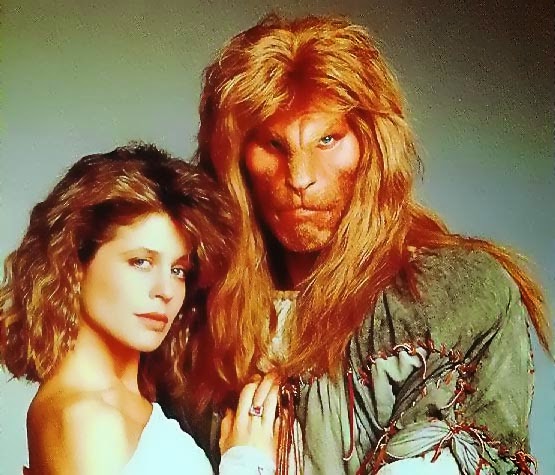My classic TV viewing is
rarely influenced by current events. However, at those moments that the world
situation seems more depressing than usual, I often find myself drifting toward
less challenging shows.
When a temporary escape
from dire headlines is warranted, the carefree appeal of a frivolous series
like The Love Boat is
particularly welcome. What sounds better to you right now – another story about
Ebola, lone-wolf terrorism, school shootings and contentious political
campaigns, or an open smile on a friendly shore?
Escapism was always one of
the series’ selling points, even if viewers were only escaping something as
mundane as winter. From 1977 to 1987, the show embarked on each new season as
autumn leaves began to fall, and sailed through the months when days were
shorter and weather forecasts promised blizzards and cold, bleak temperatures.
Growing up in the Chicago
suburbs I can still recall watching The Love Boat on Saturday nights and gazing, longingly, at the
bright sunshine and clear blue skies as the Pacific Princess sailed out of
port. As each week’s swimsuit-clad voyagers lounged on the Lido deck, sipping
tropical drinks and discussing day trips into Mazatlán or
Puerto Vallarta, it felt like a virtual vacation from the frozen wasteland
outside my bedroom window.
Critics hated it, of
course. It didn’t have the gravitas of Hill Street Blues (as if that was the objective). How dare any series
possess no higher aspirations than showcasing nice people in attractive
scenery, and simple stories of romance. But in the era that brought us the Iran
hostage crisis, the last throes of the Cold War, the Unabomber, the murder of
John Lennon and other depressing news, I’m sure millions of viewers appreciated
the break. The show came along at a good time.
And the timing was also
favorable when it came to casting. In the late 1970s and early 1980s, many of
Hollywood’s golden age stars were still performing, even if opportunities to do
so were not as prevalent. The Love Boat‘s prestigious passenger list includes June Allyson, Van Johnson, Lana
Turner, Joseph Cotten, Olivia de Havilland, Greer Garson, Joan Fontaine,
Stewart Granger and Ginger Rogers.
Television stars past and
present filled out the remaining roles, along with a few frequent travelers who
qualified as celebrities, though at the time we didn’t know why, exactly: Bert
Convy, Mary Ann Mobley, Dr. Joyce Brothers, and the ubiquitous Charo, who
seemed to check in at least once a month.
The Love Boat crew was as responsible for the series’ success and
longevity as its guest stars. I can’t prove it, and have not found any polling
on the subject (academia is shockingly bereft of scholarly research on The
Love Boat) but for me it was the
friendly and reliable presence of Gavin McLeod, Fred Grandy, Ted Lange, Bernie
Kopell and Lauren Tewes that anchored the series though episodes good and bad.
What a wonderful job that
must have been. With the stories carried by the passengers, your captain,
yeoman purser, doctor, bartender and cruise director received scripts with
one-third of the lines they would have to memorize on a typical hour-long
series. Kopell and Grandy had so much free time they also wrote several
stories. And once or twice each season a crewmember would get to play a moment
that required extra depth and effort, and they were always up to the task.
I had it bad for Julie
McCoy, who seemed like one those sweet and wholesome girls that you would be
proud to take home to mom. That says something about my naiveté as a viewer,
because in nine seasons she invited a lot of guys back to her cabin. At the
time I thought they were just getting together to sip hot chocolate and play
some board games.
As with any long running
series, even one with such a pliable premise, The Love Boat eventually began to lose its mojo. I never thought
Jill Whelan was the Cousin Oliver of the cruise lines, but most people didn’t
get why Vicki was necessary. Lauren Tewes’ one-season departure disrupted crew
chemistry, and the late addition of the Love Boat Mermaids and series-killer
Ted McGinley (as ship photographer Ace) smacked of desperation.
But even in its least
inspired moments, The Love Boat
was a refreshing oasis of optimism in a desert of cynicism. It was weekly wish
fulfillment that reassured all of us losers that there really was someone out
there for everyone.
And if nothing else, it was
a time capsule for an era of film, television and popular culture that we
rightly recall as magical. Artist Andy Warhol sailed on the Pacific Princess.
So did Donna Reed and Dolly Parton, Hulk Hogan and Lillian Gish, the Hudson
Brothers and the Pointer Sisters. Luise Rainer, who won back-to-back Oscars in
1936 and 1937, appeared on The Love Boat (playing twins!). Janet Jackson was there at the beginning of her
career, and it was where Janet Gaynor, the first Best Actress Oscar winner in
1928, gave her final performance.
The first two seasons of The
Love Boat are available on DVD. In discouraging
times like these, the rest of the run cannot be released too soon.












